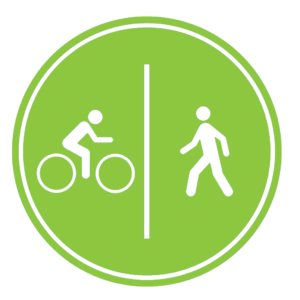In many parts of the country, there are efforts underway to make our communities friendlier for bicyclists and pedestrians as part of the walkable communities’ movement. As more people are commuting by walking or bicycling to work and shop, people are spending more time in communal spaces and shared facilities, and in turn, communities are busy working on making their roadway networks friendlier. Everyone benefits from this — better for the environment, less vehicular traffic, and the added benefit of healthier people.
But what is the best approach for creating an alternative transportation network in a community? And how have other towns developed a network of sidewalks, trails, bike paths and bike lanes and garnered support amongst its residents and users? How can you build consensus and garner support in the beginning for planning and implementing these types of projects in a community? Having worked with several communities on such projects, I have found several key steps that, undertaken at the beginning of a project, can lead to the successful outcome.
- First Understand the Larger Picture. Taking as broad an approach as possible in the beginning is critical to understanding the context of a project or study. Looking at a problem regionally or even nationally
 can be advantageous, even if a problem seems to only exist on a local level. Gain as much knowledge of existing efforts and opportunities at the start – you can sift through to find the most relevant information, while saving it all to see if it might prove helpful.
can be advantageous, even if a problem seems to only exist on a local level. Gain as much knowledge of existing efforts and opportunities at the start – you can sift through to find the most relevant information, while saving it all to see if it might prove helpful.
- Identify and Gain Support of the Local Champions. Find the local supporters of your project and engage them to assist you. Often times if a neighbor, friend, or acquaintance who is energized and enthusiastic about the project makes that first personal contact, there is much better chance the person with whom they talk will participate in the project. Engage these local champions to take hold of the reigns with you to help guide the project. Local champions can make a project become a reality.
- Be Inclusive. This seems like a no-brainer, but is it a very important part of a successful project. Include as many people from different sectors within your community as you can up-front. The broader the group, the better chance they will participate and help with building consensus and local support for your project. It may involve unique slants for approaching and including them in the process.
- Collaborate. In order to promote a collaborative approach, share what you learn and listen to what others have to say. Document these for inclusion during collaborative hands-on meetings. If a participant can see that their thoughts and ideas are identified and considered through the planning and design of a project, they will feel like they are being listened to and part of the project. This usually leads to everyone being more supportive of the recommended outcome.
- Implement. Once a plan has been created, pick one or two projects to implement. Be realistic in the selection of these projects. Make these few selected projects something that can be done in a short period of time. This can lead to more local support of your efforts and help with moving a longer term project along in the future.
Having worked on numerous alternative transportation planning projects, this approach proved to be paramount to a successful outcome. Whether planning for an alternative transportation network in a community or developing a vision for a complex project, these few steps can lead to positive outcomes.
By: Gail Henderson-King
